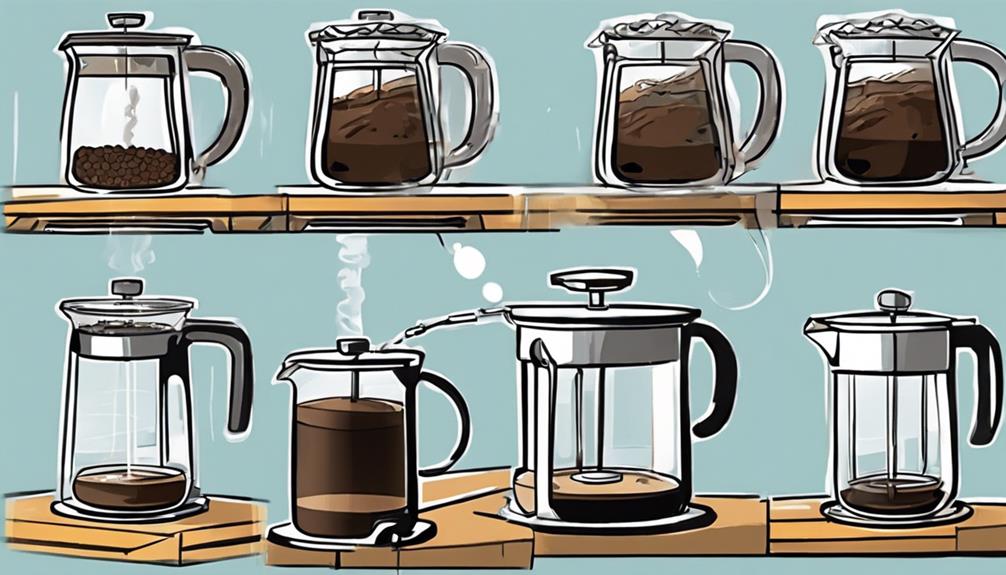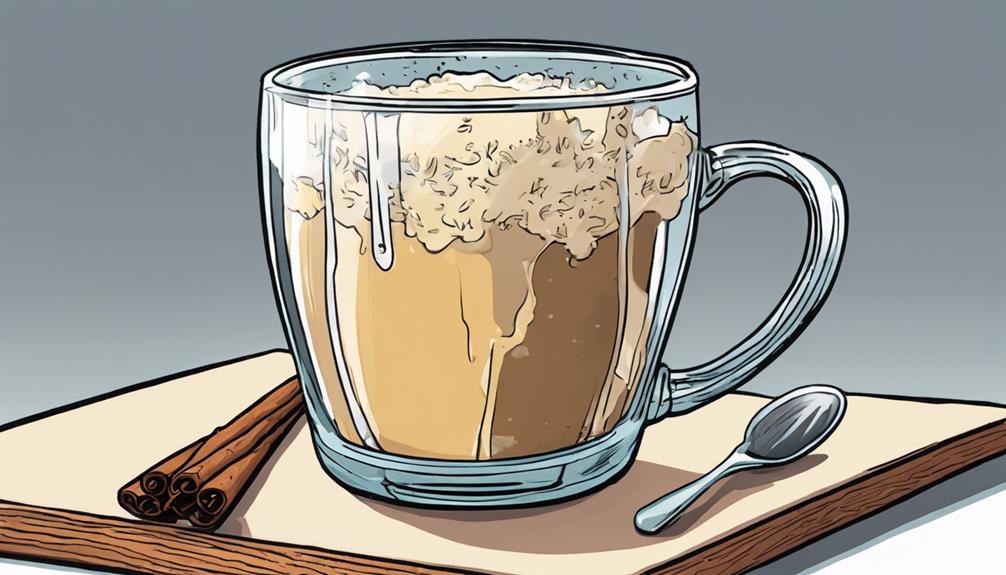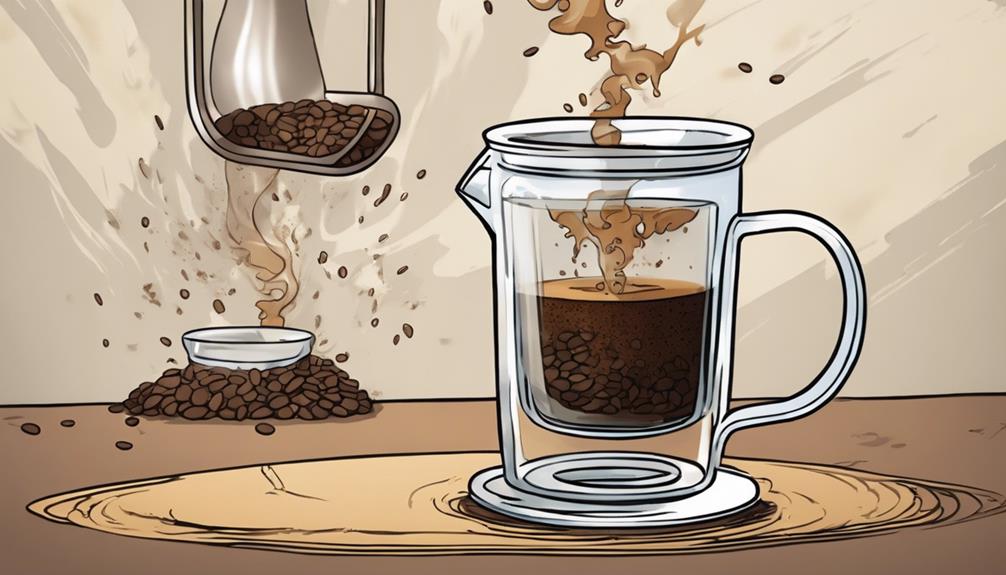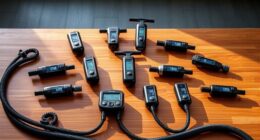To craft unique blends with unique flavors, combine single-origin beans to develop distinct profiles. Carefully choose different coffees to achieve desired taste results. Mix beans from different regions and processing techniques for a balanced blend. Take into account origin, roast level, and flavor profile for a full-bodied taste. Play around with proportions to create complexity and harmony in your brew. Dive into the art of blending and delve into the realm of coffee roasting to uncover limitless possibilities.
Key Takeaways
- Select single-origin beans with varying profiles.
- Experiment with different ratios for unique flavors.
- Use precision scales for accurate blending.
- Consider roast levels to enhance complexity.
- Blend carefully for a well-rounded custom brew.
Understanding Coffee Blending Basics
To understand coffee blending basics, consider how combining different single-origin beans creates distinct flavor profiles.
When roasters guide the process of creating coffee blends, they carefully select component coffees that complement each other to achieve a desired taste profile. Additionally, roasters must consider the origin and processing method of each component coffee to ensure a cohesive and balanced blend. It is essential to maintain relationships with reliable suppliers and stay up-to-date on the latest coffee import business tips to source high-quality beans. By staying informed and keeping the end consumer in mind, roasters can create a successful and appealing coffee blend that satisfies the palates of their customers.
Specialty coffee roasters often blend beans from various regions to balance acidity, body, and sweetness, resulting in a harmonious and complex flavor experience.
By combining beans with different processing methods and altitudes, roasters can create unique blends that highlight the best characteristics of each coffee.
Understanding how each bean contributes to the overall flavor profile is essential in crafting exceptional blends that stand out in the world of specialty coffee.
Experimenting with different ratios and roast levels allows roasters to fine-tune their blends, offering customers a diverse range of flavors to enjoy.
In the art of coffee blending, precision and expertise play a pivotal role in delivering a consistently excellent cup of coffee.
Choosing the Right Beans for Blends
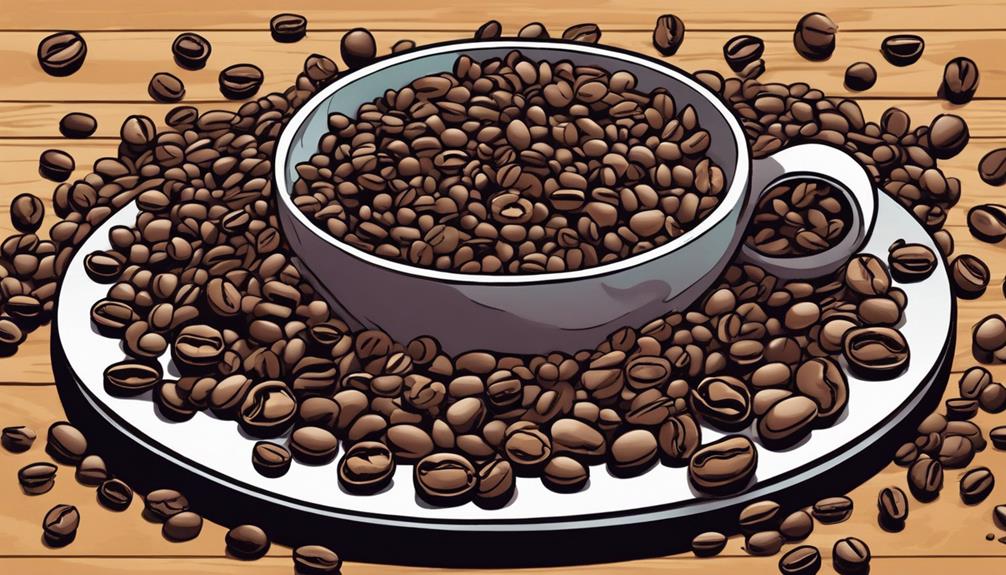
When blending coffee, focus on selecting beans with varying flavor profiles to craft a well-rounded and intricate blend. Consider the origin, roast level, and flavor profile of different coffee beans to guarantee they harmonize in your final product.
Opt for beans with diverse characteristics like fruity, nutty, or chocolatey notes to add depth to your blend. Experiment with the ratios of each bean to achieve the desired taste balance and complexity. It's essential to avoid combining beans with conflicting flavor profiles or acidity levels, as this can result in a muddled or unbalanced blend.
Factors Influencing Flavor Profiles
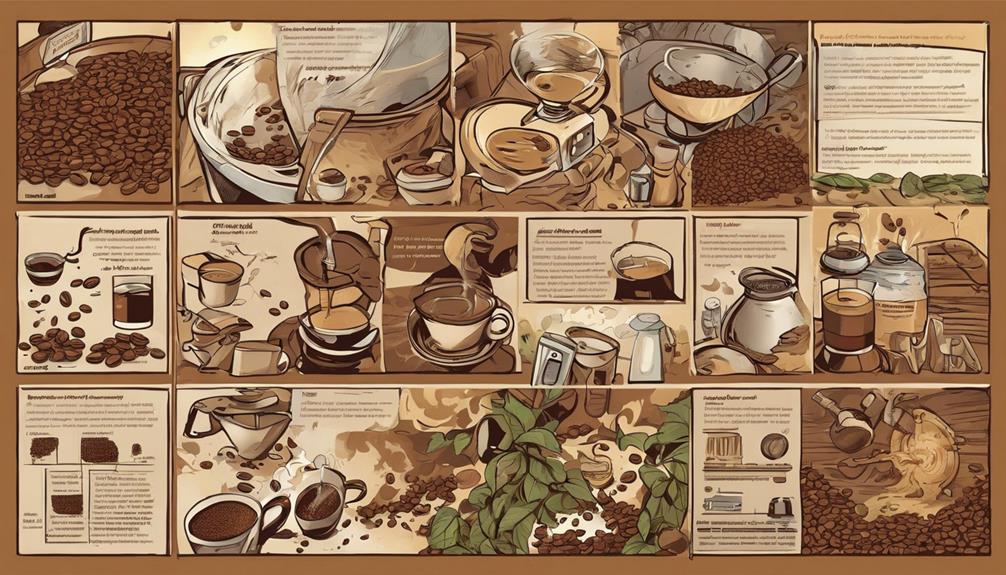
Various elements such as the origin, region, variety, altitude, and processing methods of coffee beans play a significant role in shaping the flavor profiles of blended coffees. Understanding how these factors influence the roasted coffee is vital in creating blends with a unique flavor. Here are some key points to take into account:
- Origin and Region: Beans from different regions possess distinct flavor profiles, contributing to the overall complexity of the blend.
- Altitude and Variety: The altitude at which coffee is grown and the specific variety of the beans impact the taste and aroma of the final blend.
- Roasting Process: The roast level of each coffee bean in the blend is essential in determining the flavor profile, as different roasting styles bring out varying characteristics in the beans.
Tips for Selecting Blend Ratios
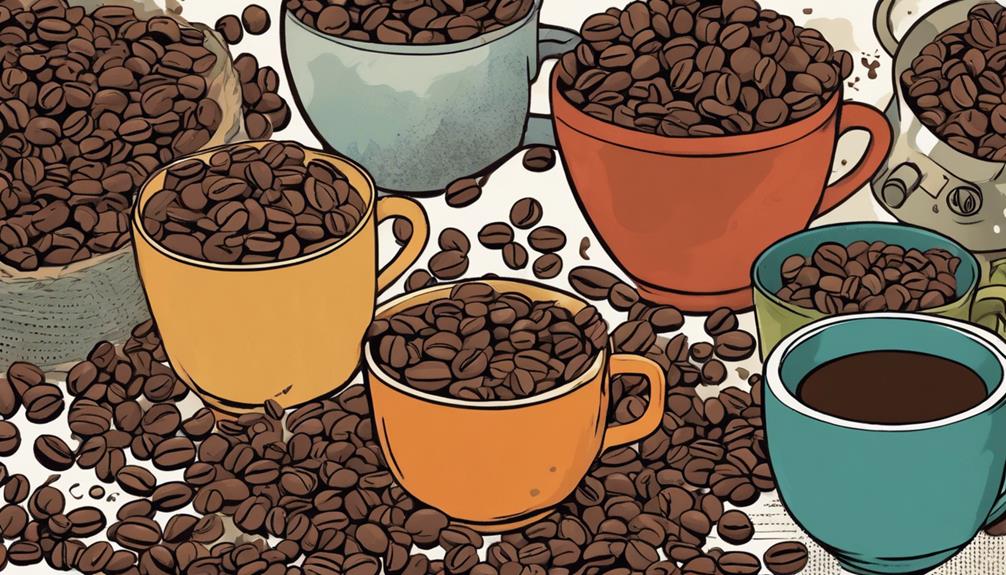
Consider experimenting with different blend ratios to achieve your desired flavor profile, ensuring each component contributes to the overall taste of the coffee. Start with a base coffee at 40-60% of the blend and add complementary coffees in smaller increments to create balance.
Adjust the ratios based on your taste preferences, aiming for a total coffee percentage of 100% to maintain consistency. Keeping detailed notes on the blend ratios used and the resulting flavors will help you replicate successful blends in the future.
Remember that the ratio of each coffee in the blend can notably impact the final taste, acidity, and body of the brew.
Equipment for Professional Blending
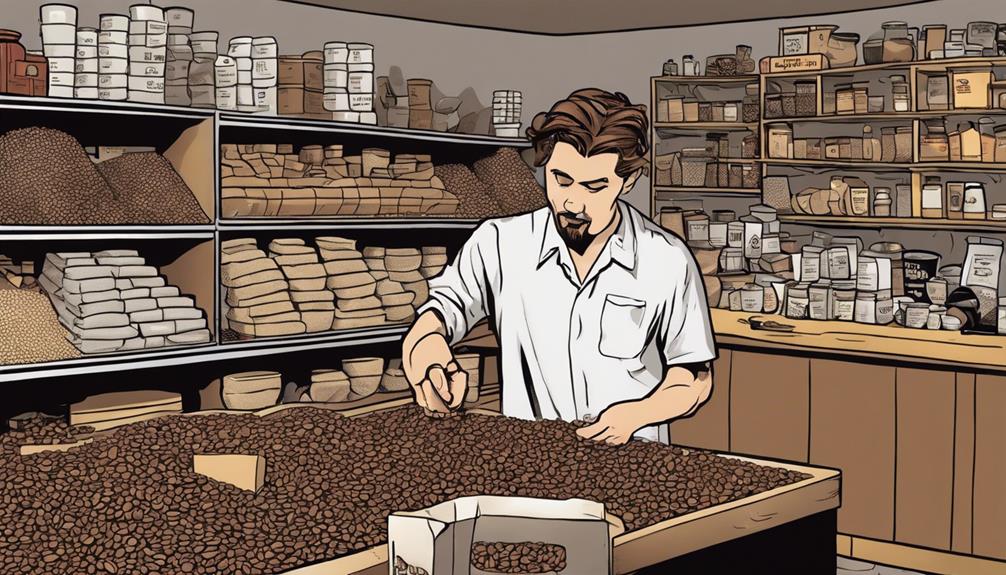
You need essential blending equipment like industrial coffee grinders and precision scales to kickstart your custom brews.
Making adjustments to the blending ratio and achieving best roast levels will set the foundation for your unique coffee creations.
Let's explore how these elements come together to elevate your professional blending game.
Essential Blending Equipment
Accuracy coffee scales are an important tool for precisely measuring coffee when blending for custom brews. To achieve the perfect blend, you need to guarantee consistency and accuracy in every step of the process.
Here are some essential blending equipment you should consider:
- High-Quality Burr Grinder: A high-quality burr grinder is essential for achieving a consistent particle size distribution, which is vital for extracting the perfect flavors from the coffee beans.
- Reliable Coffee Roaster: Investing in a reliable coffee roaster is key to developing custom roast profiles tailored to your specific blends, enhancing the flavor profiles of your beans.
- Digital Temperature-Controlled Kettles: Digital temperature-controlled kettles are indispensable for maintaining water at the ideal brewing temperature, ensuring peak extraction and flavor development in your custom brews.
Blending Ratio Adjustments
For professional mixing, incorporating precise measurements through specialized equipment is crucial in mastering blending ratio adjustments. Achieving the perfect mix requires attention to detail in adjusting proportions to create unique flavor profiles.
Using professional mixing equipment such as scales and measuring tools guarantees accuracy in the mixing process, enabling consistent and reproducible results. By fine-tuning the blending proportions, roasters can customize their mixes to meet specific taste preferences and quality standards.
Consistency in blending proportions is key to guaranteeing that each batch maintains the desired flavor profile, providing a consistent taste experience for consumers. Professional mixing equipment not only aids in the adjustment of proportions but also helps in achieving a balanced and flavorful final product.
With the right tools and precision in mixing ratios, roasters can create signature blends that stand out in the competitive coffee market.
Optimal Roast Levels
To master perfect roast levels in professional blending, utilizing specialized coffee roasters is essential for controlling the flavor profiles of each bean. When it comes to achieving the best roast levels for custom brews, the right equipment is necessary.
Here's how roast equipment plays a critical role in maximizing roast levels:
- Precision Control: Professional coffee roasters offer precise control over the roasting process, allowing you to tailor each bean to the desired roast level.
- Consistent Results: Consistency is key in blending different beans with varying roast levels. Roasters help maintain consistency in the roasting process, ensuring uniformity in flavor profiles.
- Enhanced Blending: With the ability to roast beans to specific levels, you can create blends that harmoniously combine different roast profiles, resulting in a well-balanced and flavorful cup of coffee.
Investing in quality roast equipment is the first step towards mastering best roast levels for your custom coffee blends.
Commercial Applications of Blending
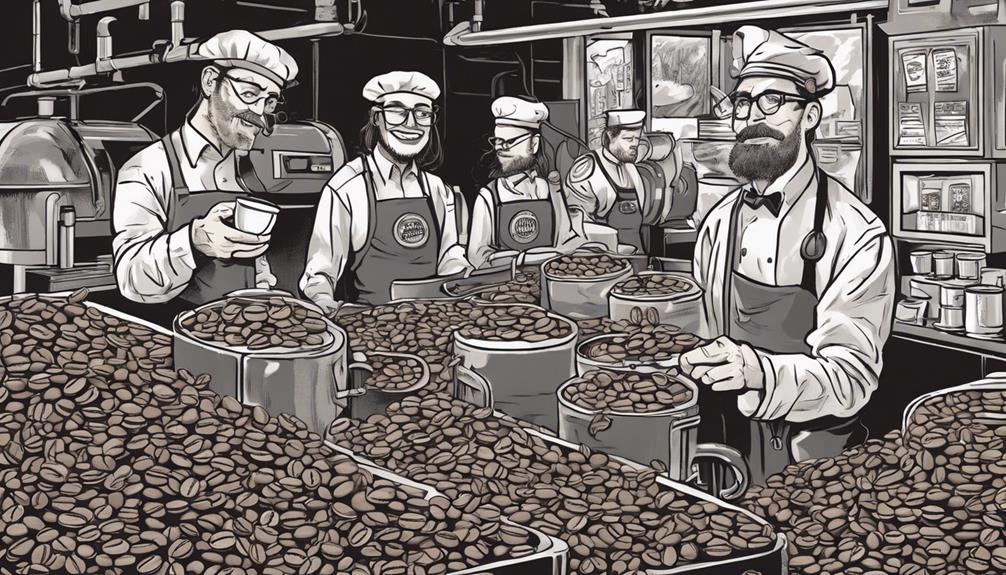
When it comes to commercial blending, you can benefit from creating unique house blends and seasonal offerings that cater to changing consumer preferences.
By utilizing blending techniques, you can establish your brand identity, offer corporate gifting options, and maintain consistent quality across multiple locations.
Consistency in blending not only guarantees a reliable product but also helps build a loyal customer base and differentiate your business in the competitive market.
Business Blend Benefits
In the world of commercial coffee applications, blending offers businesses a plethora of benefits and opportunities for growth. By incorporating blends into your business strategy, you can create unique house blends, seasonal blends, and corporate gifting options that set you apart from competitors.
Consistency in your coffee blends guarantees a uniform taste experience, fostering brand loyalty and adapting to evolving customer preferences. Additionally, developing a signature blend allows you to showcase your brand identity and values, resonating with your target audience on a deeper level.
Leasing commercial coffee machines further enhances these benefits by providing tax deductions, cost savings, and the flexibility to craft custom blends tailored to your customers' tastes. Embracing the advantages of commercial coffee blending can significantly elevate your business in the competitive market, attracting new customers while retaining the loyalty of existing ones.
Branding With Blends
Consistently blending coffee for your business's branding efforts can set you apart in the competitive market, showcasing your unique identity and attracting loyal customers. Coffee shops leverage commercial blending to create signature blends that serve as a unique selling point, distinguishing them from competitors. By maintaining uniformity in their blends, businesses guarantee a consistent taste experience that resonates with customers, ultimately building a loyal following.
Commercial blending offers coffee shops the flexibility to cater to changing consumer preferences, providing a dependable product that meets the demands of the market. Additionally, businesses can use commercial blending as a strategic tool for branding, corporate gifting, and enhancing their overall brand image.
Developing signature blends through commercial blending allows businesses to establish their presence in the market, attracting customers through distinctive coffee offerings and solidifying their position in the industry.
Techniques for Roasting Blends
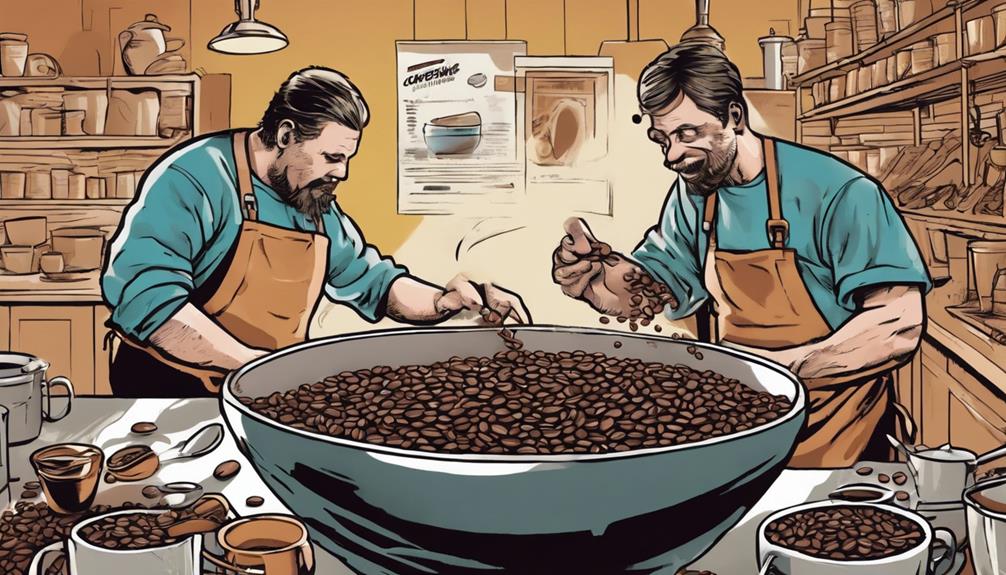
To achieve peak flavor complexity in your custom coffee blends, mastering the techniques for roasting different beans is essential. When roasting blends, consider the blend ratios, roast level, and flavor combination to create a harmonious and delicious final product.
- Blend Ratios: Experiment with different proportions of beans to find the perfect balance of flavors in your blend. Adjusting the ratios can significantly impact the taste profile of your coffee.
- Roast Level: Understand the best roast level for each type of bean in your blend. Different beans may require varying roast profiles to highlight their unique characteristics while still harmonizing with the other beans.
- Flavor Combination: Pay attention to how different beans interact with each other when roasted together. Aim to create a blend where the flavors complement each other, resulting in a well-rounded and flavorful cup of coffee.
Engaging Resources for Blend Enthusiasts
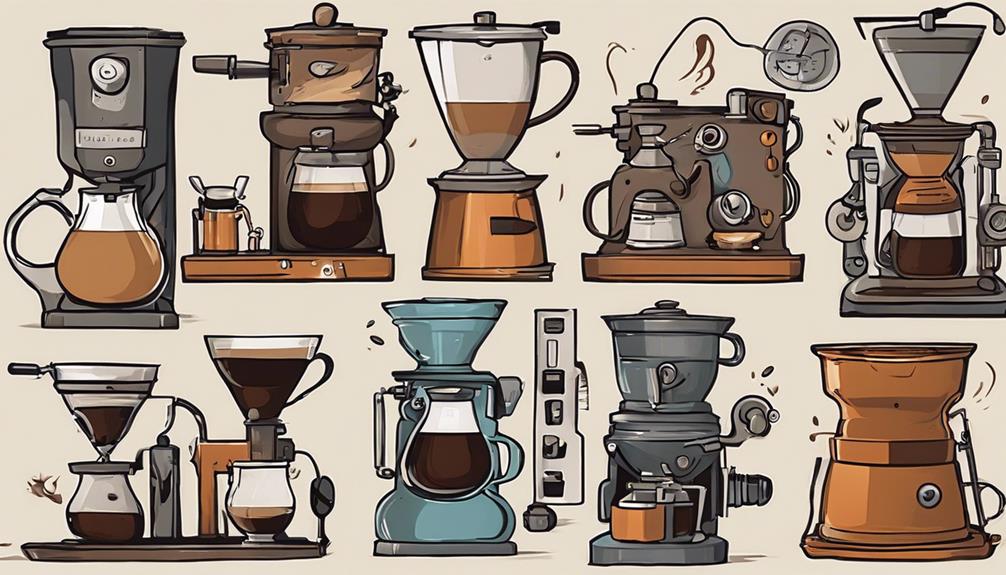
Investigate a diverse range of resources tailored for blend enthusiasts to enhance your coffee blending journey. Connect with like-minded individuals on online forums and communities to share tips and experiences with other coffee enthusiasts.
Specialty coffee shops provide unique bean selections, enabling you to create custom blends in the comfort of your home. Consider subscribing to coffee subscription services to regularly sample a variety of blends and expand your palate.
Delve into books and guides on roasting techniques to gain valuable insights and master the art of creating your own coffee blends. Stay up to date on the latest products and services in coffee blending by subscribing to newsletters from reputable sources like MTPak Coffee.
In-House Blends and Roaster Guides

Explore a variety of in-house mixtures and comprehensive roaster guides that cater to coffee enthusiasts seeking to enhance their blending skills and create personalized brews at home. Coffee Bean Corral offers a range of in-house unroasted coffee mixtures like Big Black and Four Horsemen, allowing for easy customization.
Sample packs featuring mixtures from regions such as Ethiopian, South American, Central American, Kenyan, Mexican, and Guatemalan provide an opportunity for exploration and experimentation.
Detailed roaster guides for Behmor Coffee Roaster and Hottop Coffee Roaster offer valuable insights into functionality, roasting techniques, and maintenance tips, empowering home brewers to achieve best results.
Frequently Asked Questions
How Do You Make a Custom Coffee Blend?
To make a custom coffee blend, select high-quality single origin beans. Experiment with different ratios to achieve your desired flavor. Consider the roast level of each bean for a balanced taste. Use a cupping table to refine your blend.
How Do You Blend Coffee Roast?
To blend coffee roasts, start by selecting various beans and roast levels to balance flavors. Experiment with ratios and profiles to create a signature blend. Understanding each roast's characteristics is key for a well-rounded final product.
How Do You Make Special Blend Coffee?
To make special blend coffee, select single-origin beans with complementary attributes. Experiment with ratios and roast levels to craft a unique flavor profile. Customize the taste, aroma, and complexity to offer customers a distinct coffee experience.
What Coffees Blend Well Together?
When crafting your special blend, consider pairing Ethiopian with Colombian for a balanced fruit-floral dance. Or try Brazilian with Sumatran for a rich chocolate-earth embrace. Let your taste buds lead the way to a harmonious coffee symphony!
Conclusion
Now that you've mastered the art of blending coffee roasters, you're ready to create your own custom brews that will tantalize taste buds and leave coffee lovers craving more.
So grab your beans, fire up your roaster, and let your creativity flow like a perfectly brewed cup of java.
With the right blend ratios, equipment, and techniques, the possibilities are endless.
Get ready to elevate your coffee game to a whole new level!


